
HMS Vanguard was a 90-gun second-rate ship of the line of the Royal Navy, built at Portsmouth Dockyard and launched in 1678.
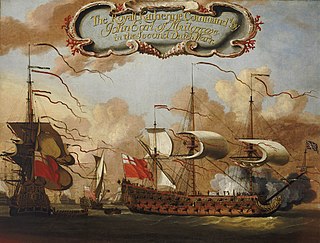
HMS Royal Katherine was an 84-gun full-rigged second-rate ship of the line of the Royal Navy, launched in 1664 at Woolwich Dockyard. Her launching was conducted by Charles II and attended by Samuel Pepys. Royal Katherine fought in both the Second and Third Anglo-Dutch Wars and afterwards, the War of the Grand Alliance before entering the dockyard at Portsmouth for rebuilding in 1702. In this rebuilding, she was upgraded to carry more guns, 90 in total, and served in the War of the Spanish Succession during which she was renamed Ramillies in honour of John Churchill's victory at the Battle of Ramillies. She was rebuilt again in 1742–3 before serving as the flagship of the ill-fated Admiral John Byng in the Seven Years' War. Ramillies was wrecked at Bolt Tail near Hope Cove on 15 February 1760.
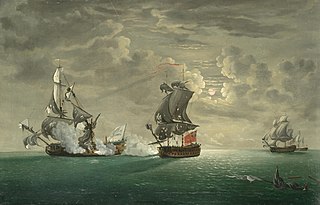
HMS Monmouth was a 66-gun third-rate ship of the line of the Royal Navy, and was likely named for James, Duke of Monmouth. She served from 1667 to 1767, winning ten battle honours over a century of active service. She was rebuilt a total of three times during her career—each time effectively becoming a completely new ship.

HMS Royal Oak was a 74-gun third-rate ship of the line of the Royal Navy, built by Jonas Shish at Deptford and launched in 1674. She was one of only three Royal Navy ships to be equipped with the Rupertinoe naval gun. Life aboard her when cruising in the Mediterranean Sea in 1679 is described in the diary of Henry Teonge.
HMS Rupert was a 64-gun third rate ship of the line of the Royal Navy, ordered on 26 October 1664 as part of the ship construction programme of that year. She was launched on 26 January 1666 at Harwich Dockyard.
HMS Greenwich was a 54-gun fourth-rate ship of the line of the Royal Navy, built by Christopher Pett at Woolwich Dockyard and launched in 1666.

HMS Charles was a 96-gun first-rate ship of the line of the Royal Navy, built by Christopher Pett at Deptford Dockyard until his death in March 1668, then completed by Jonas Shish after being launched in the same month. Her name was formally Charles the Second, but she was known simply as Charles, particularly after 1673 when the contemporary Royal Charles was launched.
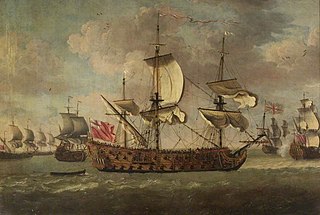
HMS Swiftsure was a 70-gun third-rate ship of the line of the Royal Navy, built by Sir Anthony Deane at Harwich, and launched in 1673. By 1685 she had been reduced to a 66-gun ship.

President was a 38-gun fourth rate frigate of the Royal Navy, originally built for the navy of the Commonwealth of England by Peter Pett I at Deptford Dockyard, and launched in 1650.
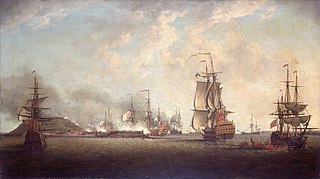
HMS Neptune was a 90-gun second-rate ship of the line of the Royal Navy. She was built under the 1677 "Thirty Great Ships" Programme and launched in 1683 at Deptford Dockyard.

HMS Boyne was an 80-gun third-rate ship of the line of the Royal Navy, launched at Deptford Dockyard on 21 May 1692.

HMS Newark was an 80-gun third rate ship of the line of the Royal Navy, launched at Hull on 3 June 1695.
HMS Ranelagh was a three-decker 80-gun third-rate ship of the line of the Royal Navy, launched at Deptford Dockyard on 25 June 1697. She took part in a number of actions during the War of the Spanish Succession, including the Battle of Vigo in 1702 and the Battle of Vélez-Málaga in 1704.

HMS Canterbury was a 60-gun fourth-rate ship of the line of the Royal Navy, launched at Deptford on 18 December 1693.
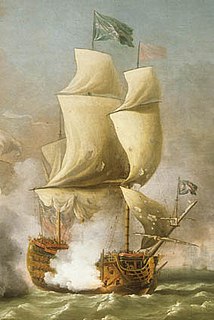
HMS Barfleur was a 90-gun second rate ship of the line of the Royal Navy, launched at Deptford Dockyard on 10 August 1697.
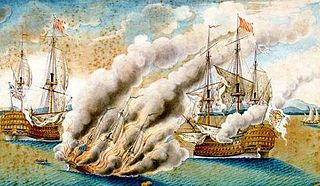
HMS Namur was a 90-gun second rate ship of the line of the Royal Navy, launched at Woolwich Dockyard in 1697.

HMS Dartmouth was a 50-gun fourth-rate ship of the line of the Royal Navy, launched on 3 March 1698 at Southampton.
HMS Panther was a 50-gun fourth rate ship of the line of the Royal Navy, built at Deptford Dockyard and launched on 15 March 1703.

HMS Hampton Court was a 70-gun third-rate ship of the line of the Royal Navy, built at Rotherhithe according to the 1706 Establishment and launched on 19 August 1709.
HMS Salisbury was a 50-gun fourth rate ship of the line of the Royal Navy, built at Chatham Dockyard to the dimensions of the 1706 Establishment, and launched on 3 July 1707. In autumn of 1707, she brought the body of admiral Sir Cloudesley Shovell from St Mary's to Plymouth prior to his burial in Westminster Abbey.














